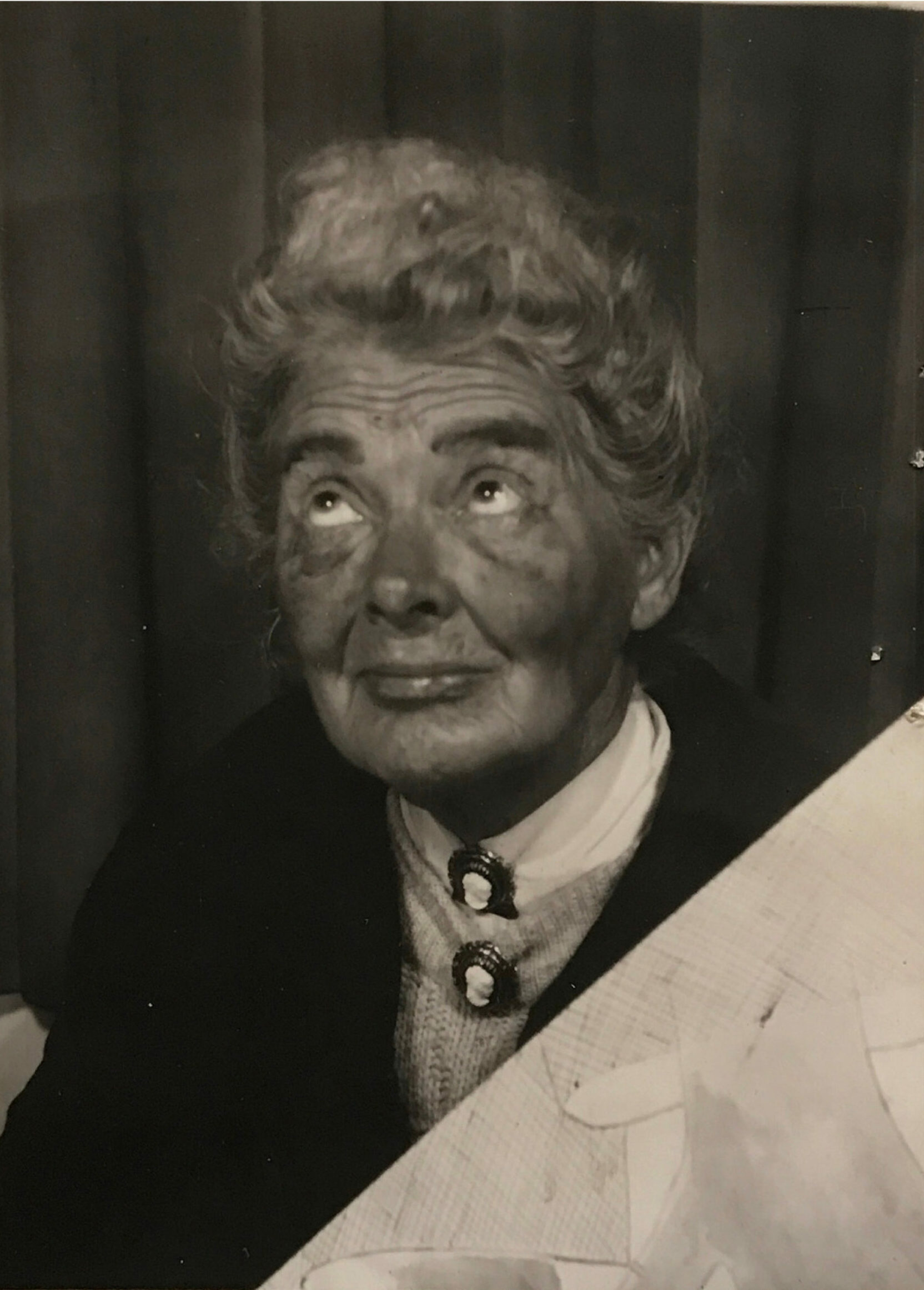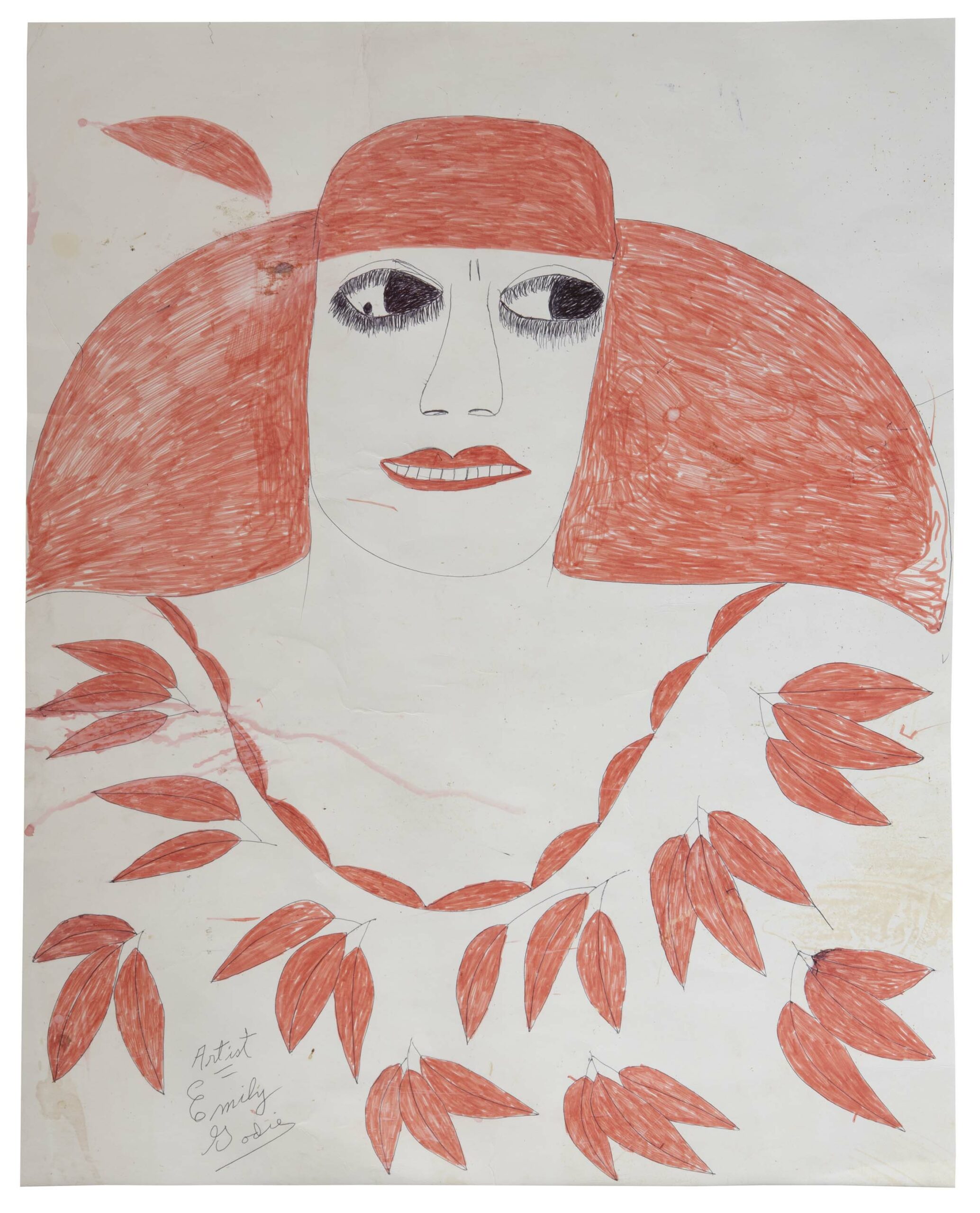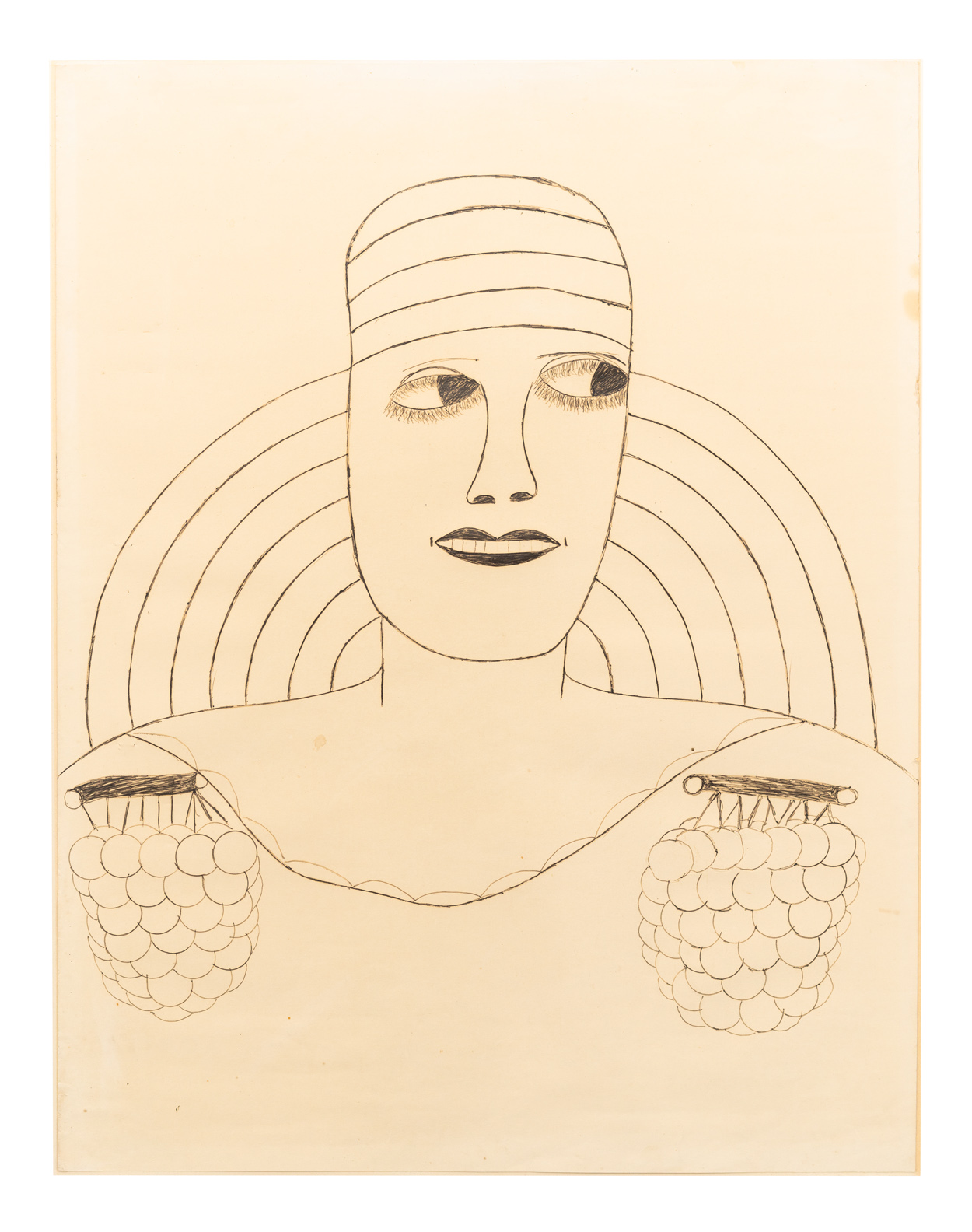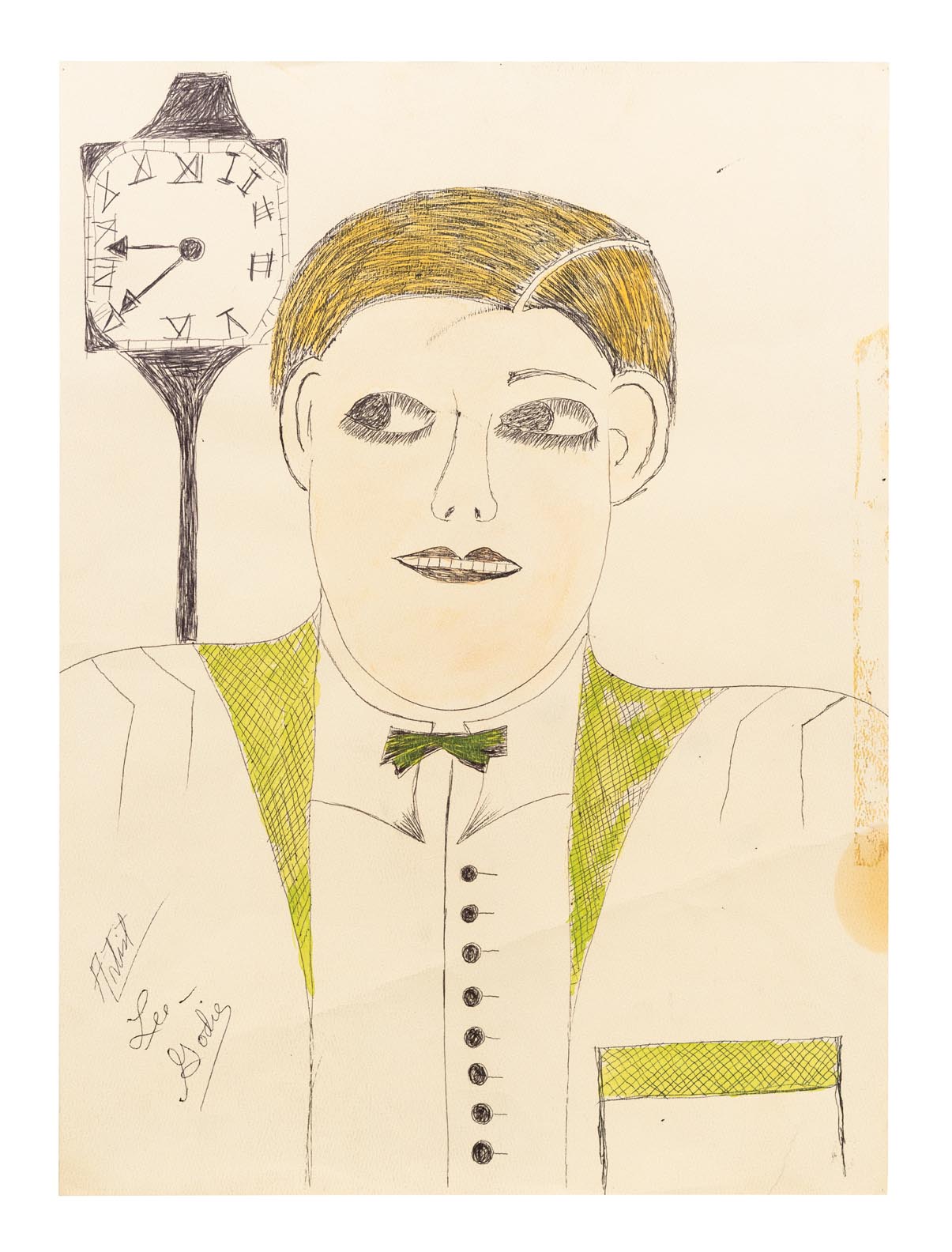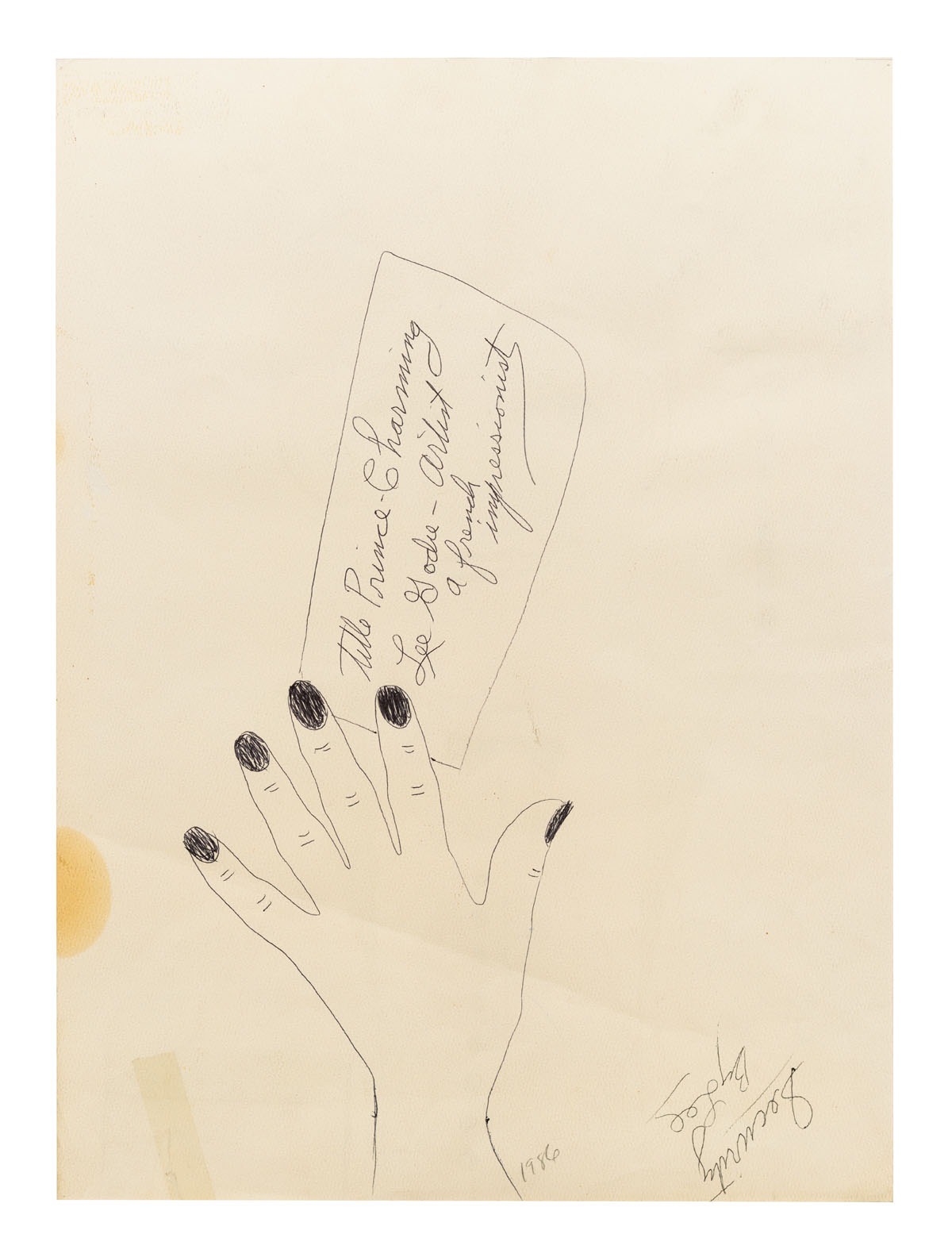Godie, Lee
United States of America, 1908 - 1994
For someone who worked and lived in the public eye for nearly thirty years, Lee Godie was tight-lipped about her private life. A Chicago native, Godie had married and raised a family, but in 1968, following the deaths of two of her children, she took to the steps of the Art Institute of Chicago and reinvented herself as an artist. Making the streets of downtown her studio, she lived outdoors and in transient hotels, sold her art in person, and used public lockers to store her supplies. Godie was a colorful and dynamic figure in the city’s cultural scene into the early 1990s, becoming arguably Chicago’s most collected artist.
Associating her creative identity with the Art Institute, which boasts one of the world’s strongest collections of late nineteenth-century French art, Godie aimed to become a modern-day impressionist. The high premium placed on visual pleasure in impressionist works helped convince her that beauty was of the utmost importance in art. Playing the flâneuse in Chicago’s downtown loop, she evoked a world of elegance in her images that was remote from her lived experience. Godie painted likenesses of society types and still lifes of birds and plants. She also took several hundred self-portraits in photo booths at the Greyhound bus station, which she embellished by hand and sometimes attached to her canvases. Her artistic activity extended beyond creating discrete images to transforming the process of selling them into a ritual. Godie valued interacting with her clients and deciding whether they deserved to own her work and, if so, how much they should pay.
Performance wove through every aspect of Godie’s art.
Source: Kara Fiedorek
